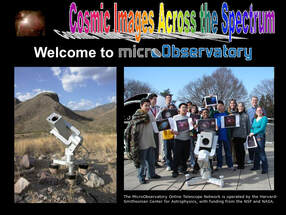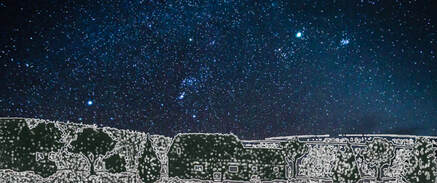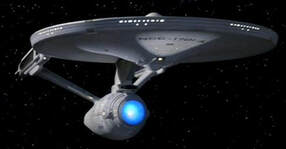On-Demand STEM Hands-On Activities
These fun and exciting STEM hands-on astronomy activities take anywhere from 15 to 45 minutes to complete for people of all ages. Each activity below has it's own page with PDF printouts, video, step-by-step instructions, materials required, and printable templates when needed for the activity. Prices are listed with each activity. After payment is made, you will be taken to the activity page and will have access to everything needed to complete the activity.
Titles & Descriptions of Our Awesome Hands-on Activities
Activity Description Purchase
|
Size & Scale of the Universe (30 min)
|
Exploring the universe from the very small to the very large, looking at matter from subatomic particles to superclusters of galaxies, and the entire universe. It's a virtual journey throughout the cosmos describing celestial objects and their relative sizes. Truly exciting images and video segments serve to bring the point home.
|
|
|
The Solar System to Scale (20 min)
|
In astronomy, the distance from the earth to the sun is about 93 million miles and is known as 1 astronomical unit (AU). This is a common measuring stick used in astronomy often. In the video, To Scale: the Solar System, blue marble sized earth was placed 176 m or 579 ft from the sun. Using this scale model from the video, calculate the distance to the nearest star system Alpha Centauri in both AU’s and miles.
Submit your answers to [email protected] within one week of registering for this activity and if both answers are correct, you will win a free activity of your choosing. Include in your response how you went about making the calculation and converting units. |
|
|
Constellations (40 min)
|
Fun hands-on activity where you take the role of creating patterns and figures in the sky like the ancient Greeks did. Of the 88 official constellations taking up the entire night sky, connect the dots (stars) to form any pattern you choose for 9 of them. Scientifically accurate positions and brightness of all the stars making up each constellation are portrayed on one page.
Celestial objects such as galaxies, nebulae and star clusters are also shown within the boundaries of each constellation in the exact position as seen in the real sky. Close-up views of each object are presented as they appear in a telescope. These views are sure to capture the imaginations of anyone. |
|
|
Build a Star Finder (35 min)
|
The Starfinder is a version of an ancient model of the sky. These models are called planispheres. The word "planisphere" means "flat sphere" - the apparent dome of the sky flattened into a sheet. Devices like this were used in ancient Rome as early as 27 B.C.
A Starfinder will show you how the sky looks at any hour of any night of the year. All you have to do is "program" the Starfinder with the date and time you want. The Starfinder can also tell you when a certain constellation will be visible. |
|
|
Cook Up a Comet (45 min)
|
Comets are believed to be some of the most ancient objects, so studying them can help us understand the early formation of the solar system. These celestial interlopers have been thought of throughout history as omens of disaster. Years ago, a scientist named Fred Whipple coined the term “dirty snowball” when describing a comet nucleus.
In this fun activity, we will create something quite similar to a comet nucleus. Using common materials easily acquired, you will actually make the equivalent of these visitors from beyond the solar system. |
|
|
Cosmic Images Across the Spectrum (45 min)
|
Using NASA's MicroObservatory online, learn how to access robotic telescopes, take photographs of galaxies, nebulae, and star clusters and use image processing tools to bring out detail in these photos the same way that professional astronomers do. Download the free image processing software onto your computer's hard drive from the NASA web site and request an image(s) from the robotic telescopes in the dark skies of Arizona. You will need access to a computer during this activity.
Using a search engine, locate and download images of the selected object taken by detectors sensitive to various frequencies in radio, infrared, ultraviolet, X-rays and gamma rays, and assemble with the processed visible image. Then, information for each selected object, such as type of object, when discovered and by who, constellation found in with its celestial coordinates, apparent and true size, brightness, etc. will be compiled onto a page or "block" and can be added to a cyber “Cosmic Quilt.” Color poster-sized printouts of all blocks can be assembled together for a physical Cosmic Quilt and put on display as an exhibit for all to see. |
|
|
Exploring Space from Our Back Yard (20 min)
|
Using a Starfinder, star maps or charts, spend some time on clear evenings to become familiar with the night sky. The best way to start is to just look with your eyes. To narrow your view, use a paper towel tube to look through. If you own a pair of binoculars, you can begin viewing celestial objects among the stars and identify them from the charts.
|
Work in progress
|
|
Galileoscope Telescope Kit (45 min)
|
The Galileoscope is a high-quality telescope kit created by astronomers, optical engineers, and science educators selected as a worldwide cornerstone project of the 2009 International Year of Astronomy (IYA), celebrating the 400th anniversary of Galileo Galilei and his first telescope. Build your own refractor telescope for observing craters on the moon, the ice crystal rings of Saturn, and other celestial wonders residing in the night sky.
Let an expert astronomer and telescope builder walk you through the process of assembling this fine instrument in a short amount of time. The telescope kit is completely covered by the cost of this activity. Kevin will send the telescope kit to your home, so allow a week or two for delivery. Then begin exploring the universe like Galileo did over 400 years ago. |
|
|
Make Moon Craters (20 min)
|
The highlands part of the lunar landscape is covered by craters, impact sites from rocks like meteoroids and asteroids over the last 4.6 billion years. The planet Mercury is also heavily cratered, and we find that many bodies in space, even comets and asteroids, have impact craters. Let’s simulate this process at home to see it firsthand in this fun activity.
|
|
|
Messier Objects Search (35 min)
|
Charles Messier was a French astronomer and comet hunter, spending clear evenings looking through his telescope for comets. Often, he would find what appeared to be a comet out in deep space, a fuzzy patch of light, but found upon subsequent evenings of observations that the object didn't move relative to the stars. That's a problem, because comets move. He listed 110 of these "nuisances," which actually turned out to be galaxies, nebulae and star clusters.
Using star charts and celestial coordinates, we can pinpoint the positions of these objects in the sky. Like a roadmap to the stars, let's explore the universe to locate these jewels of the celestial night. |
|
|
Motions of Earth in Space (20 min)
|
As we ride upon our natural spaceship earth through the universe, Einstein's theory of relativity comes to mind. Though it seems that the sun, moon, planets and stars appear to rise in the east and eventually set in the west, it is we that are actually moving, not them. There are six primary motions of the earth to consider.
Using tables, chairs, other objects and even other people, we can enjoy the fun and exhilaration of portraying these motions ourselves. To experience going through these movements can help us concretely comprehend our movement through space. |
Work in progress
|
|
Oreo Phases of the Moon (20 min)
|
As the moon orbits around the earth, the amount of sunlight shining on the lunar landscape changes each night. The word month comes from the moon’s orbital period, and during those 29 ½ days it appears to go through phases at fixed intervals. We can simulate the appearance of these phases using Oreo cookies, a fun way to learn them.
|
|
|
Space: the Final Frontier (45 min)
|
On April 12, 1961, Russian cosmonaut Yuri Gagarin became the first human in space, making a 108-minute orbital flight in his Vostok 1 spacecraft. Just 8 years later, Neil Armstrong was first to ever step foot onto the moon from Apollo 11. The history of spaceflight is not that old, yet it is rich with many missions that have made major contributions to new technological advances and our understanding of the universe. A few of those missions ended up in tragedy with the sober reminder of the innate danger of sending humans into space.
With a little online research, we can create a timeline for both manned and unmanned missions in space travel to see advances and setbacks to the industry. Based on current plans, we can also add some future missions to help see where we are going. |
Work in progress
|
|
Spaceship Earth: Our Global Environment (40 min)
|
Exploring our natural spaceship earth from a global perspective, how have humans made an impact on its environment. Are there steps we can take to ensure a safe and enduring home in the universe well into the future? Each of us can take ownership and a sense of responsibility for the well-being of our world.
|
|
|
Survival on the Moon (25 min)
|
If you were an astronaut, would you know what to do to survive a crash landing on the Moon? We begin our journey characterizing an airless world. Then we use reason to prioritize a list of 15 items that survived the crash in order of importance to help in reaching the base ship a long distance away.
|
|
|
Telescope Resolving Power (20 min)
|
On a dark clear summer night you can see the Milky Way, a dim glow stretching across the sky. The slightest optical aide from a pair of binoculars or a small telescope reveals what is making up the glow, a thousand points of light - stars just beyond the threshold of vision from a local spiral arm in our galaxy.
Resolving power is the ability to unveil objects that appear as one into separate distinct objects or parts of a whole. We depend on resolution for reading fine print, seeing clearly, and telescopic views of the heavens. |
|
|
The Joy of Scientific Research (45 min)
|
All scientific research begins with curiosity, a question. To obtain an answer, an experimental design is set up based on former attempts to find an answer, or arranged in a way to isolate the problem and eliminate outside influencing factors. A scientist must carefully think through each step of the procedure, and record exact results objectively without bias.
Here, you will take the role of a scientist by conducting research to solve a problem, something you are personally curious about and really want to know the facts. It can be as simple or as complex as you want, considering your limitations in equipment and instrumentation. Allow yourself to enjoy the process and be encouraged to share your results with me. |
|
|
The Moon Box (35 min)
|
Imagine using a shoe box, a golf ball and a flashlight to create the phases the moon goes through during its monthly orbit around the earth. This three-dimensional approach to understanding phases of the moon serves to bring the point home. All we need now is some windows positioned to view the events.
|
|
|
Total Solar & Lunar Eclipses (20 min)
|
The moon’s orbit around the earth is tilted about five degrees with respect to the earth’s orbit around the sun, and that is why we don’t experience an eclipse every month. Lunar eclipses can only occur during a full moon, while solar eclipses can only happen during a new moon phase.
In this activity, you will experience how eclipses depend on a shadow formed from either the earth or the moon blocking the sunlight. It is the shadow that makes the eclipse. |
|
|
Viewing Sun Spots (30 min)
|
Sunspots are magnetic storms that align with the magnetic field lines coming up from the core of the sun to the surface. Though they appear small, many are larger than the earth. Utmost care and concern for safety must be exercised when considering an observation of sunspots. One of the safest methods is eyepiece projection from a telescope onto a white screen. Another involves the use of filters that are effective in blocking the harmful rays.
|
Work in progress
|
|
The Plimpkin Pumpkin (60 min)
|
The Plimpkin Pumpkin Nationwide Contest selects two winners for the best face or pattern on a pumpkin and the best decorated pumpkin person or animal using artistic design. Each winner will receive the Plimpkin award and 3 free activities. Photos of pumpkin entries are submitted via email.
|
This activity is free and can be accessed here
|
























